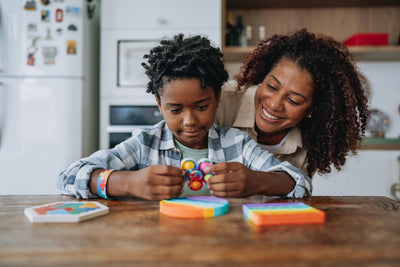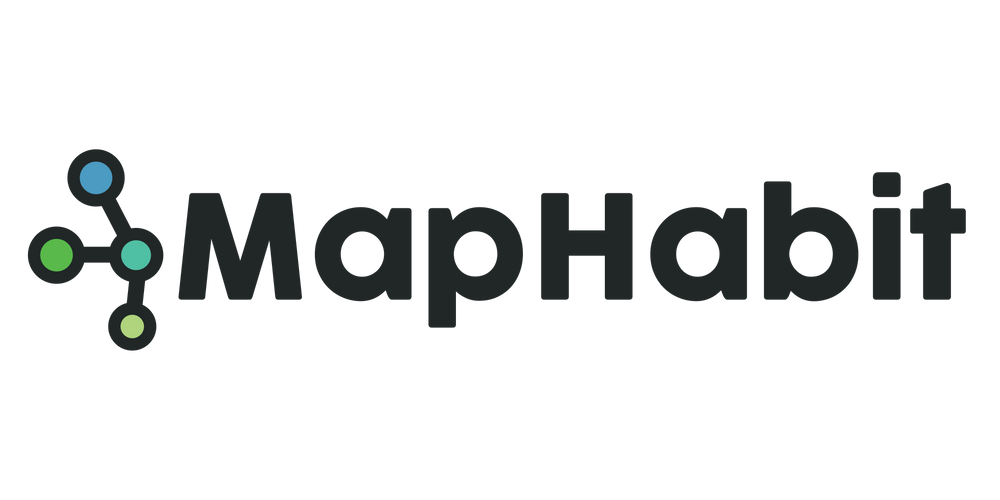You can make a visual schedule for an autistic child using simple pictures, drawings, or even objects to show what happens during their day. These schedules help kids know what comes next, feel less worried, and do more things by themselves.
If your child gets upset when routines change or has trouble moving from one activity to another, a visual schedule might be exactly what you need. Think of it as a picture map of the day - it shows your child where they're going and what happens next. This guide will walk you through everything you need to know about making visual schedules that actually work for your child.
Why Your Child Needs a Visual Schedule Right Now
The Brain Science Behind Visual Schedules
The CDC reports that autism affects about 1 in 36 children in the United States, and many of these children think in pictures rather than words. When you tell a child what's happening next, those words disappear as soon as you say them. But a picture stays there, giving their brain more time to understand and process the information.
Visual schedules are recognized by the National Clearinghouse on Autism Evidence and Practice as one of 28 evidence-based practices for autism. This means scientists have studied them carefully and found they really work. Research shows that visual schedules can be used effectively with children from ages 3 to 21 years, making them useful tools throughout childhood and into young adulthood.
Real Benefits You'll See at Home
When you use a visual schedule, amazing things start to happen:
Less anxiety and fewer meltdowns: Visual schedules reduce anxiety by providing clear information about what activities are coming up, which helps children feel more secure. Kids don't have to worry about surprises because they can see exactly what's coming.
More independence: Instead of asking you "what's next?" fifty times a day, your child can check their schedule themselves. If a child has a schedule, they can move through their day without another person having to tell them where to go and what to do.
Better communication: Even kids who don't talk much can point to pictures on their schedule to tell you what they want or need. This gives them a voice when words are hard to find.
Smoother transitions: Moving from fun activities to less fun ones (like stopping playtime for homework) becomes easier when kids can see it coming on their schedule.
Getting Started: What You Need to Know First
Understanding Your Child's Unique Needs
Before you make any schedule, spend a few days watching your child. Write down:
- Which parts of the day cause the most problems
- When meltdowns usually happen
- What activities your child loves (these will be your secret weapons)
- How long your child can pay attention to one thing
Some kids need to see their whole day at once. Others get overwhelmed by too much information and do better seeing just one or two things at a time. There's no wrong answer - just what works for your child.
Choosing the Right Visual Format
Visual schedules can use different types of symbols including line drawings, clipart pictures, photographs, or actual objects. Here's how to pick:
Real photos: Best for younger kids or those just starting with schedules. Take pictures of actual places (their classroom, the car, the bathtub) and familiar people. Seeing a photo of Mom's actual car is clearer than a drawing of any car.
Picture symbols: Once kids understand photos, you can move to simpler drawings. Using symbols instead of photos helps kids understand the general idea - a car symbol means any car trip, not just in one specific car.
Written words: Add words under pictures for kids learning to read. Some older kids might use words alone.
Objects: For kids who don't understand pictures yet, use real things. A small spoon might mean "lunch time" or car keys might mean "going in the car."
Making Your First Visual Schedule: A Simple Start
The Magic of First-Then Boards
Don't jump into a full-day schedule right away. Start with something called a "first-then board." First-then schedules show what a child needs to do now (first) and what happens after (then), making them the simplest type of visual support.
Here's how it works:
- Get a piece of paper or cardboard
- Draw a line down the middle
- Write "FIRST" on one side and "THEN" on the other
- Put the less fun activity in the "FIRST" spot
- Put something your child loves in the "THEN" spot
For example: "First homework, then iPad time" or "First get dressed, then breakfast." The tool works as a motivational strategy for building momentum through less preferred activities when the "then" activity is something the child really enjoys.
Building Your Basic Daily Schedule
Once your child understands first-then, you can make a bigger schedule:
Step 1: Pick your focus Start with just one part of the day, like the morning routine or bedtime. Don't try to schedule the whole day at first.
Step 2: Break it into small steps Think about every single thing your child needs to do. "Get ready for school" is too big. Break it down:
- Wake up
- Use bathroom
- Brush teeth
- Get dressed
- Eat breakfast
- Pack backpack
- Walk to bus
Step 3: Find or make your pictures You can:
- Take photos with your phone
- Print pictures from the internet
- Draw simple pictures yourself
- Buy pre-made picture cards
Step 4: Set up your schedule Many families use:
- A strip of Velcro on the wall with pictures attached
- A pocket chart where pictures slide in
- A three-ring binder with one activity per page
- A magnetic board with picture magnets
Step 5: Add a "finished" spot Have a basket, envelope, or special spot where completed activities go - this helps children understand that tasks are done and they're making progress.
Advanced Strategies That Really Work
Managing Transitions Like a Pro
Transitions are hard for autistic kids. Here's how to make them easier:
Use timers you can see: Visual timers like the Time Timer help children see how much time is left in an activity, making abstract time concepts concrete and understandable. When kids can watch time "disappear," they understand better when activities will end.
Give warnings: Don't just spring changes on your child. Use your schedule to show "two more activities, then we go home" or set a timer for five-minute warnings.
Make transition objects: Let your child carry a special toy or object when moving between activities. This "transition buddy" provides comfort during changes.
Create transition rituals: Sing the same song, do the same hand motions, or say the same phrase every time you check the schedule. Predictable rituals make changes feel safer.
Handling Schedule Changes Without Meltdowns
Life happens. Schedules change. Here's how to prepare:
Use a "change card" - a special symbol that means "something different is happening" - and start by using it only for positive changes. For example, if the schedule shows math homework but you decide to get ice cream instead, use the change card. This teaches kids that changes can be good things.
Keep a few "mystery" cards in your schedule. These can become anything - a fun surprise, a needed break, or a way to handle unexpected events.
Building Independence Step by Step
Start by:
- Pointing to the schedule yourself while your child watches
- Guiding your child's hand to point at the schedule
- Reminding your child verbally to check their schedule
- Letting your child check independently
Over time, most kids stop needing verbal reminders and will check their schedule on their own, building important independence skills.
Digital Tools and Apps That Make Life Easier
Top Visual Schedule Apps for 2025
Technology can make visual schedules even more powerful. Here are the best apps available now:
Choiceworks ($6.99): Created with child development specialists and leading hospitals, this app offers customizable schedules, feeling boards, and waiting timers. Kids can check off tasks and earn rewards.
First Then Visual Schedule HD (Free with in-app purchases): Simple and clean design perfect for beginners. You can use your own photos or choose from their picture library.
Goally (Device + subscription): More than just schedules, Goally offers visual cues, timers, and progress tracking specifically designed for neurodivergent kids. Parents can control everything from their phone.
Todo Visual Schedule (Free): The first wearable picture schedule designed for autism that works on Apple Watch, making it perfect for older kids who want to be more independent.
MapHabit: A Comprehensive Solution
For families looking for more than just basic schedules, MapHabit offers a patented visual mapping system with over 1,000 audio-visual and video guides designed specifically for children with intellectual disabilities. Their system goes beyond simple schedules to teach complete skills and routines.
MapHabit's tablets come pre-loaded with their app and include sensory tools like fidgets and stress balls. The system helps break down complex tasks into manageable steps with both visual and audio support. Families can create custom "maps" for any routine or skill they want to teach.
What makes MapHabit special is their focus on the whole family. Anyone in the child's support circle can create and share content, so therapists, teachers, and family members all work together. The platform is covered by Medicaid waivers in 15 states, which might make it free for qualifying families.
Free Digital Options
First Then Board (firstthenboard.com): A free website where you can create simple schedules right in your browser. No app needed - it works on any device.
Thruday (Free with premium options): Designed by someone with autism, ADHD, and epilepsy, this app focuses on visual planning with over 3,000 free images available.
Making Schedules Work at School
Partnering With Teachers
Share what works at home with your child's teacher. Many teachers already use visual schedules, but they might not know your child's specific needs. Give them:
- Copies of the exact pictures you use at home
- Information about how much detail your child needs
- Your child's favorite rewards and motivators
- Tips about timing and transitions that work
When visual schedules are used consistently between home and school, children can navigate their day more smoothly and independently.
Classroom Schedule Ideas
Teachers can use:
- A main class schedule showing the day's activities
- Individual desk schedules for each student
- Portable schedules kids can carry
- Center rotation schedules showing where to go next
- Special schedules for fire drills or assemblies
Troubleshooting Common Problems
"My Child Ignores the Schedule"
If your child won't look at their schedule:
- Make it more fun with their favorite characters or colors
- Start with just two activities instead of a full day
- Put the schedule where they can't miss it (on the bathroom mirror, by their bed)
- Pair checking the schedule with a tiny reward (a high-five, a sticker, one minute of screen time)
"My Child Gets Upset When Activities End"
Some kids need more than just a schedule. Try:
- Using an "all done bucket" where favorite toys go when time is up - set a timer, give warnings, then help your child put the item in the bucket
- Making the end of activities predictable (always the same song, always the same routine)
- Following less-preferred activities immediately with preferred ones
- Using visual countdowns showing "5 more, 4 more, 3 more..."
"The Schedule Seems to Make Things Worse"
Sometimes kids become too rigid about their schedules. If this happens:
- Build in "choice time" where they pick the activity
- Use "flexible" cards that can change
- Practice small, positive changes regularly
- Remember that some resistance is normal at first - most kids need 2-3 weeks to adjust
Creating Schedules for Different Ages
Toddlers and Preschoolers (Ages 2-5)
Keep it simple:
- Use real photos of actual items and places
- Show just 2-3 activities at a time
- Focus on major transitions (home to school, play to nap)
- Use songs and movement when checking the schedule
- Make checking the schedule a game
Elementary School Kids (Ages 6-11)
Add more detail:
- Include academic subjects and homework time
- Add social activities and friend time
- Use combination of pictures and words
- Let them help make their schedule
- Include choices within the structure
Teenagers and Young Adults (Ages 12+)
Focus on independence:
- Transition to phone apps or written schedules
- Include time management and deadline tracking
- Add social events and job responsibilities
- Let them manage their own schedule with support
- Use tools that don't look "babyish" - many autistic adults use apps like Notion or Google Calendar with visual elements added
The Science Behind Why This Works
Research from the National Clearinghouse on Autism Evidence and Practice Review Team identified visual schedules as evidence-based practice after reviewing multiple studies that met strong research criteria. But why do they work so well?
Many people with autism are excellent visual thinkers who understand and remember information better when it's presented visually rather than verbally. When you give verbal instructions, the child has to:
- Hear the words
- Process the language
- Remember what was said
- Figure out what it means
- Know what to do about it
That's a lot of work! With visual schedules, they just look and understand.
Visual schedules work especially well when combined with other strategies like prompting and reinforcement. They're not magic on their own - they work best as part of a complete support system.
Resources to Get You Started Today
Free Visual Schedule Resources
Many websites offer free pictures and templates:
- Boardmaker (boardmakeronline.com): Professional picture symbols with free trials
- ARASAAC (arasaac.org): Completely free picture database in multiple languages
- Do2Learn (do2learn.com): Free picture cards and schedule templates
- Autism Little Learners (autismlittlelearners.com): Offers a free Visual Supports Starter Set including first-then boards and basic schedule pictures
Materials You Can Buy
If you want ready-made materials:
- Picture cards on Amazon: Search for "PECS cards" or "autism visual schedule cards"
- Velcro strips: Buy both rough and soft sides in bulk
- Laminating sheets: Protect your pictures so they last longer
- Pocket charts: Great for sliding pictures in and out
- Magnetic boards: Easy to rearrange and update
Getting Professional Help
If you're struggling, these professionals can help:
- Speech therapists: Experts in communication and visual supports
- Occupational therapists: Can help with sensory needs and daily routines
- Board Certified Behavior Analysts (BCBAs): Specialists in behavior and autism interventions
- Special education teachers: Experienced in creating and using visual schedules
Many of these services are covered by insurance or available free through early intervention programs (for kids under 3) or your local school district (for kids 3 and older).
Making It Stick: Your 30-Day Plan
Week 1: Observation and Preparation
- Watch your child's current routine
- Note problem times and favorite activities
- Gather or create your pictures
- Set up your schedule board
Week 2: Start Small
- Introduce a first-then board for one transition
- Use it consistently for the same situation
- Celebrate every success, no matter how small
- Don't change anything else yet
Week 3: Expand Slowly
- Add 2-3 more activities to the schedule
- Start using it for a longer part of the day
- Let your child help move pictures to "finished"
- Keep routines as consistent as possible
Week 4: Build Independence
- Reduce your verbal prompts
- Let your child check the schedule themselves
- Add one small choice ("do you want to brush teeth first or get dressed first?")
- Share successes with teachers and therapists
Final Thoughts
Making a visual schedule for your autistic child isn't just about managing behavior or preventing meltdowns (though it definitely helps with those things). It's about giving your child a tool to understand their world, communicate their needs, and feel more in control of their day.
Remember, every child is different. What works perfectly for one child might need tweaking for another. Start simple, be patient with yourself and your child, and celebrate small wins. That first time your child checks their schedule without being reminded? That's huge. The day they handle a schedule change without a meltdown? That's amazing progress.
Visual schedules aren't a cure or a quick fix - they're a bridge. They help your child cross from confusion to understanding, from dependence to independence, from anxiety to confidence. And with the right tools and support, including innovative solutions like MapHabit's comprehensive visual mapping system, you can build that bridge together.
Ready to get started? Pick just one transition that's hard for your child right now. Make a simple first-then board for it. Use it tomorrow. That's all you need to do to begin this journey. Your child's calmer, more independent future starts with that one small step.
Need more support? MapHabit offers personalized assistance and comprehensive tools designed specifically for families like yours. Their team can help you create custom visual schedules and teach complex skills step-by-step. Visit their website to learn if you qualify for free access through state funding programs.








